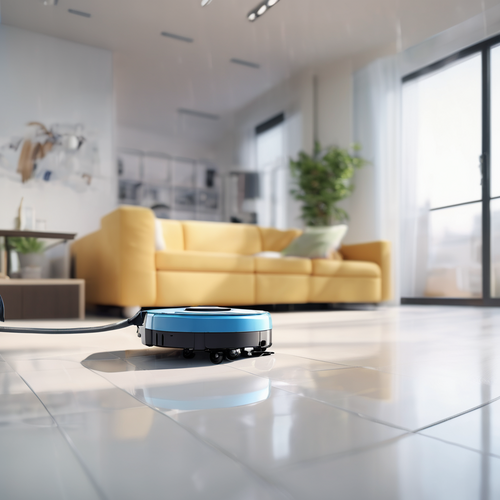Cleaning Technologies: Weighing Costs Against Benefits
In a world that thrives on efficiency and speed, the cleaning industry often finds itself at a curious crossroads. On one side, you have traditional cleaning methods reminiscent of a bygone era, where elbow grease reigned supreme. On the other, the allure of modern cleaning technologies glints like the sun on a freshly polished surface. But is the shift towards technology worth the price? Does investing in cleaning technologies yield more substantial benefits than simply scrubbing away at stains with a mop and bucket? 🧽
To unpack this tangled web, we must dive into a gripping cost-benefit analysis that unveils the stark contrasts and unexpected values lurking beneath the surface of cleaning technologies.
The Price Tag: Cost of Cleaning Technologies
Investing in cleaning technologies often comes with a hefty price tag that can make even the most ardent supporter of innovation pause. One could argue that spending thousands on a robotic vacuum cleaner is akin to purchasing a diamond-studded collar for a pet that happily rolls in the mud. Yet, the initial costs represent just the tip of the iceberg in understanding a long-term vision.
- Initial Investments: Modern cleaning solutions—ranging from automated machines to advanced detergents—often require a significant upfront investment. A high-quality floor scrubber can cost upwards of $10,000, while robotic cleaners may start around $3,000. Unfiltered panic at the checkout? Totally rational. 😱
- Maintenance Matters: Like a finely tuned sports car, these machines demand regular maintenance. Scheduled servicing, replacement parts, and training for staff can add to the overall expense, transforming your initial investment into a long-term commitment.
- Training and Integration: Educating your team about new technologies can feel as exhausting as teaching a cat to fetch. However, effective training ensures that workers maximize the use of these innovations, turning perceived costs into capital rather than drains.
The Payoff: Benefits of Cleaning Technologies
So, what light beams through this haze of costs? Clean technologies don’t merely promise a polished surface; they offer deeper, more profound changes in operating dynamics that warrant careful consideration:
- Efficiency Reimagined: Automated cleaning machines can operate in circles—literally. They clean with precision and speed, reducing labor costs while increasing productivity. This isn’t merely a step forward; it’s like leaping to another realm where grime doesn’t stand a chance. 🚀
- Consistency and Quality: Robots don’t have off days or get distracted by that fascinating fly buzzing around. They deliver meticulous results each time, ensuring a clean that’s consistent and reliable, which may lead to heightened customer satisfaction.
- Sustainability Gains: Many cleaning technologies are designed with eco-consciousness in mind, using less water and environmentally safe chemicals. Investing in such technologies can reduce your carbon footprint, making you not just a cleaning expert but also a planet hero. 🌍
- Long-term Savings: While the initial investment may sting, the longevity of durable cleaning technologies can lead to reduced overall operational costs over time. It’s the old adage: “Spend more now to save more later” ringing true with real-world implications.
The Balancing Act: Weighing Costs Against Benefits
At the crux of decision-making lies a simple yet vital question: is the outcome worth the effort and expense? It’s a balancing act—like trying to ride a unicycle while juggling. Still, decisions hinge not just on dollar signs but on the value of those dollars:
“Often, the perception of the cost is where the irony lies,” states Dr. Lydia Edwards, a technology investment strategist. “The assumption that traditional methods are cheaper leaves out the hidden costs of inefficiency and employee burnout.” 🎭
If one were to delve deeper into the interplay of old vs. new—traditional cleaning methods, while straightforward, often mask inefficiencies that can surface over time. In contrast, implementing new technology can infuse your cleaning protocols with a level of sophistication that is not only appealing but essential in a rapidly evolving marketplace.
The Future is Here: Embracing the Shift
As we stand on this precipice of decision, it’s hard to ignore the advancements ushering in an era of cleaner, smarter environments. The curious evolution of cleaning technologies signals a movement towards a future where persistence and machines blend seamlessly. Embracing this shift does not merely reflect a commitment to cleanliness; it signifies an ambitious step into a realm that balances cost with a promise of effective cleaning solutions.
In pondering whether the costs outweigh the benefits, maybe one shouldn’t ask, “Is it worth it?” Instead, one should ponder: “What future do I want to create for my cleaning practices?” After all, in a world that never stops evolving, staying in place feels like a sure-fire way to lose ground in both efficiency and satisfaction. So, dear reader, which side of the cleaning technology debate will you land on? 🗳️
